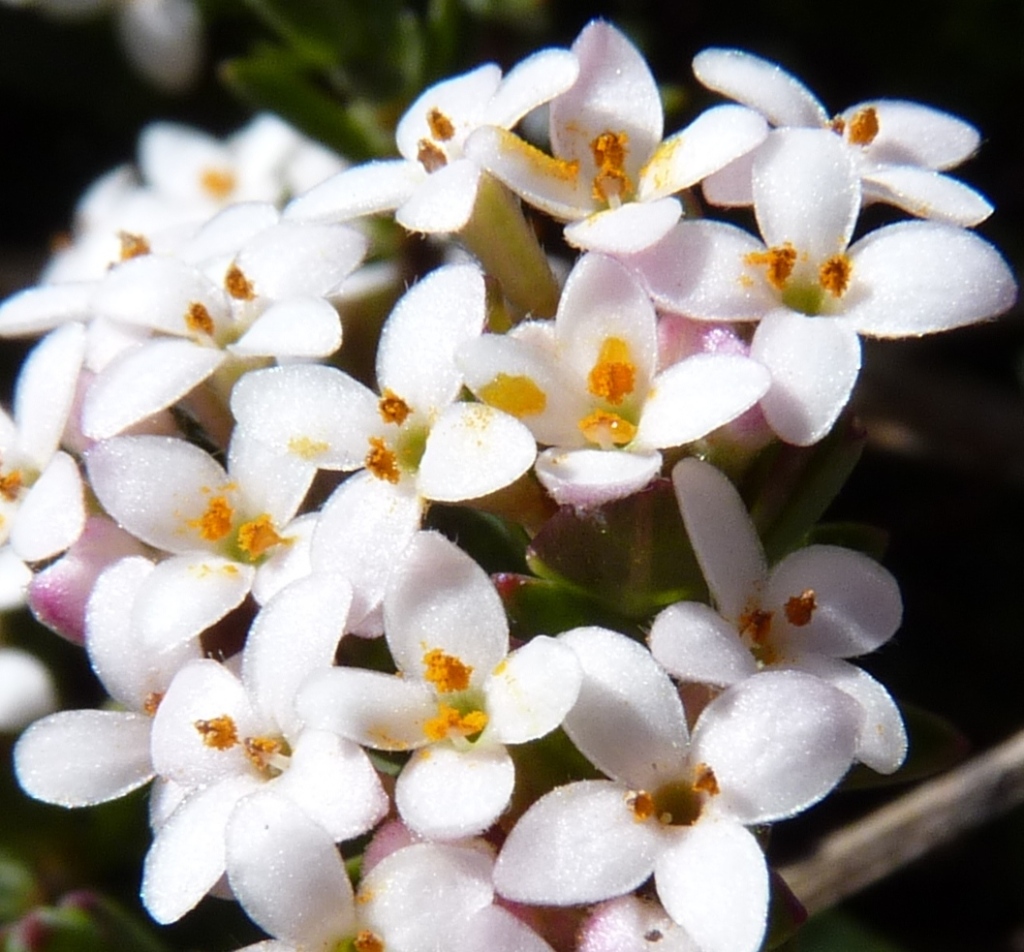Pimelea alpina
F.Muell. ex Meisn. Alpine Rice-flowerProstrate or low and spreading undershrub to c. 15 cm high; stems glabrous; nodes prominent. Leaves opposite, mostly crowded at ends of branches, shortly petiolate, more or less narrowly elliptic, 3–13 mm long, 1–5 mm wide, usually glaucous, concolorous or paler below, glabrous. Inflorescence terminal, a 5–18-flowered head; involucral bracts 4, sessile, elliptic or ovate, 4–9 mm long, 2–5 mm wide, glabrous, green. Flowers bisexual or female, antrorse-hairy outside, sparsely hairy or glabrous inside, reddish-pink or white; floral tube 3–6 mm long, style-portion longer than ovary-portion, circumscissile above ovary; sepals spreading, c. 2 mm long, glabrous inside; pedicel hairy; stamens shorter than sepals; anthers opening laterally or somewhat laterally; style exserted. Fruit dry, enclosed. Flowers mainly Dec.–Feb.
HSF, HNF, VAlp. Also NSW. Grows in alpine and subalpine woodland, heathland or grassland.
Differs from similar species such as Pimelea linifolia in being a usually prostrate, or low and spreading, alpine shrub with leaves mostly crowded and confined to the end of each branch.
Entwisle, T.J. (1996). Thymelaeaceae. In: Walsh, N.G.; Entwisle, T.J., Flora of Victoria Vol. 3, Dicotyledons Winteraceae to Myrtaceae, pp. 912–930. Inkata Press, Melbourne.
 Spinning
Spinning

